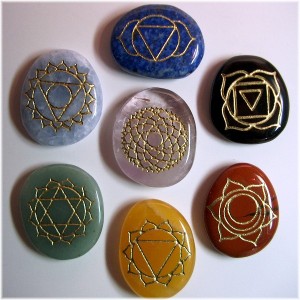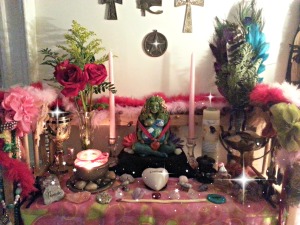“Oh, Great Isis, All-hearing, All-receiving, All-seeing, Giver of dreams, Guardian, Guide, Hallowed, Lady of Visions, Leader of Muses, Mediatrix between the celestial and the terrestrial, Menouthis, Mistress of the Oneirocrits or Intervening Power, Wisdom, Lady of Understanding”
As you learn to dream, the chaos recedes, and meaningful, reliable dreams begin to occur. The ability to dream and remember is a skill that all can learn with application and intent. It is a powerful and magical tool, one that gives us direct communication with the Divine.
The principles used in successful dream incubations in the temples of ancient Egypt, Greece, Rome, and amongst the Celtic Druids, and also the Buddhist monks, are just as valid today as they were thousands of years ago. Information gathered from surviving records show that ancient priests and priestesses were familiar with the principles of dream therapy long before the psychotherapists of the modern world.
Precognitive, clarvoyant, and telepathic messages and imagery can occur in our dreams. But unless we are capable of recalling these flashes of insight, in waking life the importance is lost to us. Recurring dreams often indicate that something important needs attention in our daily lives, or may also highlight a recurring pattern in our behavior. Nightmares have been associated wit stress and are also linked to sensitivity and creativity. There is one principle that is valid both in dreaming and in waking life; unpleasant dreams, like difficult situations, can yield the richest rewards if faced with courage and resilience.
Many cultures place great emphasis on the content of dreams, and they are used as prophetic tools and as instruments of revelation and inspiration. Buddhists also believe that portions of one’s karma can be erased in dreams, as the reality of the emotions experienced in dreaming are equal to that which can be experienced in the everyday life of an individual.
We can make use of our dream experiences by being conscious of them when they occur. This is done in two ways. One way to do this is by cultivating the ability to remember our dreams and write them down in a dream journal. The other ways are through developing levels of awareness to create a state of lucid dreaming, which we covered on the previous post, and to learn the art of dream incubation.
Cultures that actively encourage the dreaming experiences are the tribal Senoi people of Malaysia, the Shamans of the Balinese Hindu culture, and in times past, the Iroquois North American Indians also employed dream techniques. Research has shown that these cultures have had successful results, from their intuitive dream states, when applied in waking life.
DREAM INCUBATION
“She (Isis) stands beside the sick in their dreams providing remedies for their illnesses and if they declare to Her their obedience, then they regain their health contrary to all expectation.” – Diodorus Siculus
In the ancient temples, the priests and priestesses had stele placed about the grounds with detailed descriptions of the dreams and subsequent cures of those who came seeking help. The stele were testaments of the effectiveness of the cures that had occurred to others who sought such help. The pilgrims had most likely already heard the stories of others praising the powers of the Deity who presided over the temple, which is why they continued to come.
According to surviving records, thousands of pilgrims experienced dreams in which they were visited by the Goddess or God of the healing temples and received the healing advice they sought. This healing followed a prescribed period of preparation in which the pilgrim underwent purification, listened to devotional hymn, witnessed rites of worship, made offerings, inhaled the smoke of holy incense, and spent time in private devotions in the surrounding gardens filled with flowers and aromatic plants. In other words, the pilgrims entered a period of stillness, known as incubation, which placed them in a receptive state to their chosen Deity. These techniques date back as far as recorded history. It was a common technique employed in Isian temples for healing work, and preparation of a candidate for the priestess/priesthood. Dream work is a technique that enables intuitive connection to the world of spirit and Deity.
Most of us do not have access to temple incubation chambers, or their gardens. Instead we must make do with our altars or small shrines, often in a corner of a room, or with a small table or a portion or your dresser or mantle for sacred space. But we can still utilize the same techniques employed by the priests and priestess in the ancient temples.
For successful dream incubation the following steps are suggested. Do feel free to set the mood with meditation, prayer, incense, flowers, music. Whatever helps you personally to move to a receptive, relaxed state of mind when you go to sleep is useful.
-Clearly formulate what type of information you need. Then call on your chosen personal Deity for help and guidance.
-Devise a single sentence, which asks the question. Avoid phrasing so as to only receive a yes or no answer. Keep it open ended as this gives more leeway for information to come through.
-Repeat the question a few times while waiting to go to sleep.
-Try having a cup of mugwort tea, as it helps to enhance the dreaming experience and greatly assists in recalling dreams. Dreamtime and Divination is a lovely blend of several organic herbs that are perfect for dream work.
-Place a dream pouch under your pillow.
-Record the dream immediately upon awakening. If you have more than one dream, record them all. Separate dreams in a single night can actually deal with the same issues, but give answers from differing perspectives.

Carefully assess the imagery of the resulting dream for the next few days. Consider the dream from different levels, job, health, relationships, any issues currently being dealt with in waking life. Sometimes a new thought, or clue can cause you to shift your original conclusions. There are many dream interpretation books on the market, but I personally feel that since the images and messages which come are aimed at the person seeking answers and clarification, the best person to interpret your dreams is YOU.
Lastly, I would like to stress the importance of keeping your dream journal, and to jot down your feelings immediately upon waking. Even the slightest distraction can vanish the memory of the dream. I have two journals for dream work. One that I keep by my bedside, where I hurriedly scribble my impressions, imagery, colors, words, feelings, etc, as soon as I open my eyes, and another for formally writing down the scribbles into a cohesive (and legible) format.
Many factors will contribute for your understanding of your dreams. Moon phase and sign, your mood, your moontime, your health, what you ate the night before, possible events in the waking time, etc. A suggested layout for the dream journal is as follows:
Day, Date, and Time
Moon Phase and Sign
Moontime phase
Your health status
Mood prior to dream
Any foods/drinks/medicines consumed prior to sleep
Events in the waking time that may affect your dreaming
Description of the dream – as much detail as possible, including colors, sounds, feelings, weather, time of the day or night, etc.
Keeping this accurate record will provide you with a clear understanding of your dream, and after a while you will start to see a pattern.
Until next time, I wish you all sweet dreams ❤
Love and Bright Goddess Blessings
Isis Selenaia
Chrysalis Goddess














